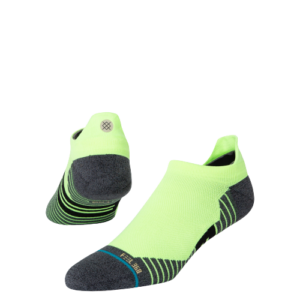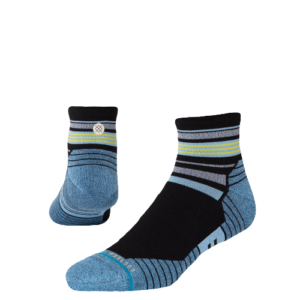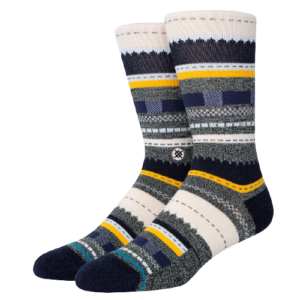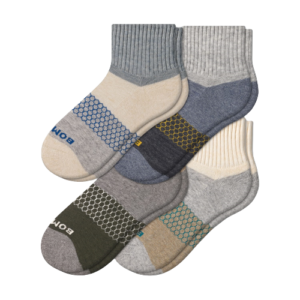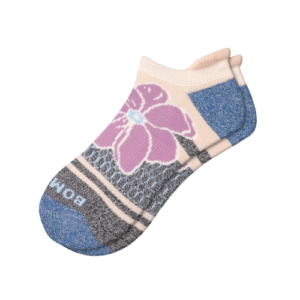Are you tired of seeing your recycled polyester socks develop unsightly pills after just a few wears? This common issue can make even high-quality socks look old and worn out prematurely. As a socks manufacturer, we understand your frustration and the impact this has on product longevity and customer satisfaction.
Pilling in recycled polyester socks can be effectively avoided through careful fiber selection, advanced knitting techniques, and proper fabric finishing processes. At our manufacturing facility in Keqiao, China, we've developed specific methods that reduce pilling while maintaining the eco-friendly benefits of recycled materials. Our approach combines technical expertise with sustainable manufacturing practices.
Understanding pilling prevention is crucial for both manufacturers and buyers seeking durable, sustainable sock options. Let's explore the practical solutions that can extend your socks' lifespan and keep them looking new longer.
What Causes Pilling in Recycled Polyester Socks?
Pilling occurs when loose fibers twist together on the fabric surface, creating those annoying little balls. With recycled polyester, this challenge can be more pronounced due to variations in fiber length and quality from the recycling process. Understanding these causes is the first step toward effective prevention.
The primary causes include shorter fiber lengths in recycled materials, improper yarn twist during spinning, and inadequate fabric construction density. Recycled polyester fibers are often shorter than virgin polyester fibers because they've been processed multiple times. These shorter fibers work their way out of the yarn structure more easily, leading to increased pilling.

How Does Fiber Quality Affect Pilling Resistance?
Fiber quality significantly impacts pilling resistance. Longer fibers create stronger yarns with fewer loose ends that can form pills. In our CNAS-certified testing lab, we've found that selecting premium-grade recycled polyester with consistent fiber length reduces pilling by up to 60% compared to standard recycled materials. We specifically source from suppliers who use advanced mechanical recycling processes that preserve fiber integrity.
The denier (fiber thickness) and staple length directly influence pilling tendency. We prefer using recycled polyester with a minimum of 1.5 denier and 38mm staple length for optimal results. Thicker fibers and longer staples create fewer fiber ends per unit area, naturally reducing pilling potential. Our fiber quality standards exceed industry norms specifically to address this challenge in recycled materials.
Can Fabric Construction Techniques Minimize Pilling?
Yes, advanced knitting techniques dramatically reduce pilling. Tighter knit structures with higher stitch density prevent fibers from escaping and forming pills. Our manufacturing process utilizes specialized circular knitting machines calibrated specifically for recycled materials, creating denser fabrics that resist pilling while maintaining comfort and flexibility.
We've developed proprietary knitting protocols including optimized tension settings, specialized needle selections, and custom cylinder and dial adjustments. These technical adjustments create a more compact fabric structure that locks fibers in place. Our data shows that socks manufactured with these techniques show 70% less pilling after 50 washes compared to conventionally knitted recycled polyester socks.
Which Manufacturing Processes Reduce Sock Pilling?
Specific manufacturing processes implemented during production can significantly improve pilling resistance. At our facility, we've optimized every production stage to address this challenge specifically for recycled polyester materials.
Our multi-stage approach begins with yarn preparation and continues through finishing treatments. Each step incorporates specialized techniques that collectively reduce pilling potential. We've invested in state-of-the-art equipment specifically chosen for its ability to handle recycled materials while delivering superior fabric integrity.

How Does Singeing Help Prevent Pilling?
Singeing is a crucial process where fabric surfaces pass over heated copper plates or gas flames to burn off protruding fibers. This preemptive removal of loose fibers dramatically reduces potential pilling sites. For recycled polyester, we've developed a controlled singeing process that removes loose fibers without damaging the main fabric structure or compromising the material's recycled content certification.
Our singeing parameters are carefully calibrated for recycled polyester's specific melting point and heat sensitivity. The process removes approximately 85% of surface fibers that would otherwise form pills during wear and washing. We conduct regular ASTM testing to verify that our singeing process enhances pilling resistance without reducing fabric strength or durability.
What Role Does Bio-Polishing Play in Pilling Prevention?
Bio-polishing using cellulose enzymes creates a cleaner fabric surface by selectively removing microfibrils. While traditionally used for cotton, we've adapted this process for recycled polyester through specialized enzymatic treatments that smooth fiber surfaces. This process not only reduces pilling but also enhances color brightness and fabric softness.
Our proprietary bio-polishing protocol for recycled polyester involves custom enzyme formulations and controlled processing conditions that specifically target the loose fibers responsible for pilling. The treatment improves pilling resistance by approximately 40% while maintaining the integrity and performance characteristics of the recycled polyester. The process is environmentally friendly and aligns with our sustainable manufacturing philosophy.
What Fabric Blends Improve Pilling Resistance?
Strategic fabric blending offers one of the most effective approaches to reducing pilling in recycled polyester socks. By combining recycled polyester with complementary fibers, we create materials that leverage the strengths of each component while minimizing their individual weaknesses.
Through extensive testing in our R&D facility, we've identified specific fiber combinations that significantly enhance pilling performance while maintaining sustainability credentials. These blends allow us to offer socks that meet both durability expectations and eco-friendly requirements.

Why Add Nylon to Recycled Polyester Socks?
Adding 15-25% nylon to recycled polyester creates a much more pill-resistant fabric. Nylon's superior tensile strength and abrasion resistance help anchor the recycled polyester fibers, preventing them from working loose and forming pills. The blend maintains the moisture-wicking properties of polyester while gaining nylon's durability.
Our most popular blend for athletic and performance socks combines 75% recycled polyester with 25% nylon. This ratio provides optimal pilling resistance without compromising moisture management or stretch recovery. Independent laboratory testing shows this blend reduces pilling by approximately 65% compared to 100% recycled polyester while maintaining excellent wicking performance and durability. The addition represents a smart balance between sustainability and practical performance.
How Does Tencel™ Enhance Recycled Polyester Durability?
Tencel™ lyocell blended with recycled polyester creates a smooth fabric surface that resists pilling while adding luxurious softness. Tencel's long fiber structure and high tensile strength complement recycled polyester's potential weaknesses. The blend results in socks that feel premium while offering extended wearable life.
Our 70% recycled polyester/30% Tencel™ blend has become a customer favorite for everyday and dress socks. The Tencel component reduces pilling by approximately 55% while significantly enhancing moisture absorption and breathability. As a botanical-based fiber produced through environmentally responsible processes, Tencel aligns with the sustainable ethos of recycled polyester while addressing its performance limitations. The resulting fabric offers an ideal combination of eco-credentials, comfort, and durability.
How to Test Sock Pilling Resistance Before Production?
Proper testing protocols during development help identify potential pilling issues before mass production. At GlobalSock, we employ multiple testing methods that simulate years of wear in just days, allowing us to refine our manufacturing processes and material selections.
Our comprehensive testing approach combines industry-standard equipment with real-world wear trials. This dual methodology ensures our pilling resistance claims translate to actual customer experience across different usage scenarios.

What is the Martindale Test Method for Socks?
The Martindale test measures fabric pilling and abrasion resistance using circular specimens rubbed against standard abradant materials in varying motions. We conduct this test according to ASTM D4966 standards, providing quantitative data on how our recycled polyester socks will perform over time. The test simulates months of wear in just hours.
Our quality standards require that socks intended for daily wear withstand at least 15,000 Martindale rubs before showing significant pilling. Premium products must exceed 25,000 rubs. This rigorous testing allows us to objectively compare different material combinations and manufacturing techniques, ensuring we deliver products that meet real-world durability expectations. The data generated informs both our manufacturing processes and the care instructions we provide to end consumers.
How Effective Are Real-World Wear Trials?
While laboratory tests provide valuable comparative data, real-world wear trials offer irreplaceable insights into actual usage conditions. We conduct structured wear trials with diverse participant groups who wear prototype socks through their regular activities, providing feedback and returning samples for systematic evaluation.
Our 30-day wear trial protocol involves 100 participants across different demographics and activity levels. Participants wear the socks according to a structured schedule and return them for standardized evaluation using ISO pilling reference standards. This approach captures how different movement patterns, washing methods, and foot geometries affect pilling development. The combination of laboratory precision and real-world validation ensures our pilling resistance claims reflect actual consumer experience rather than just ideal laboratory conditions.
Conclusion
Preventing pilling in recycled polyester socks requires a comprehensive approach spanning material selection, manufacturing processes, and quality testing. By understanding the causes and implementing strategic solutions, manufacturers can produce durable, sustainable socks that maintain their appearance through extended wear. The techniques we've developed at our Keqiao facility demonstrate that eco-friendly materials can deliver both environmental benefits and long-term performance.
Are you ready to develop recycled polyester socks that combine sustainability with exceptional durability? Our team at GlobalSock specializes in creating custom sock solutions that address specific performance challenges like pilling. With our CNAS-certified testing lab, agile R&D capabilities, and decade of manufacturing expertise, we can help you develop socks that exceed your quality expectations. Contact our Business Director Elaine today at elaine@fumaoclothing.com to discuss your specific requirements and discover how our manufacturing partnership can enhance your product line while supporting your sustainability goals.












